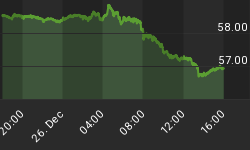For the first time in over a year, investors are really beginning to worry about the interest rate situation. Up until recently all we've heard from the financial press is how rates have been near 45-year lows and that "further declines are likely." Not so, as the latest spike in the yield for the 10-year note has shown. The 10-Year Yield Index is now above 4.6%, a level not seen since last summer.
This upside move was no surprise to us as our earlier commentaries predicted this rise, which has continued to surprise the bond bulls. The latest blow to the bulls came in the form of the Federal Reserve Chairman's latest pronouncement that the U.S. economic expansion is putting inflationary pressure on the economy.
On Tuesday, March 22, the Fed increased the federal funds interest rate by a quarter-point. While the hike was anticipated by many, the bond market reacted a lot more sharply than most had expected as the 10-Year Treasury Yield spiked a further 2% for the day.
The Fed's rate increase Tuesday was the seventh consecutive rate hike and it pushes the benchmark Fed Funds rate to 2.75%, compared with just 1% last June.

Turning our attention to the technical picture, there is an interesting observation that can be made when examining the 1-year chart for the 10-Year Yield Index (TNX). As you will see in the above chart, TNX is now decisively above its key short-term 30-day, 60-day, and 90-day moving averages with those lines now turning upward. This reflects the upturn in the interest rates cycle and is suggestive of a revisitation of the 4.8% - 4.9% area which marked last year's high.
Can you imagine what would happen if TNX actually made a higher high above last year's high in the coming weeks? That would throw a huge monkey wrench into the rosy forecasts made by Wall Street analysts for the year 2005 and would put additional pressure on the housing and lending markets at a time when the market can ill afford such a setback. Indeed, as I indicated earlier this year is likely to be the "Year of the Yield" in more ways than one! Things are just now getting interesting...
Let's not forget that the recent yield spread between high yield debt and Treasuries was 2.6 percentage points, the narrowest spread in 14 years. This paltry spread reflects excessive optimism and bullish complacency about the state of the economy and credit markets and is a potential danger signal for trouble down the road. Remember, the last time we experienced such euphoria in the junk bond market was in 1998, the year that witnessed the Asian currency and Russian credit crises, not to mention the near-meltdown of the global economic system.
















